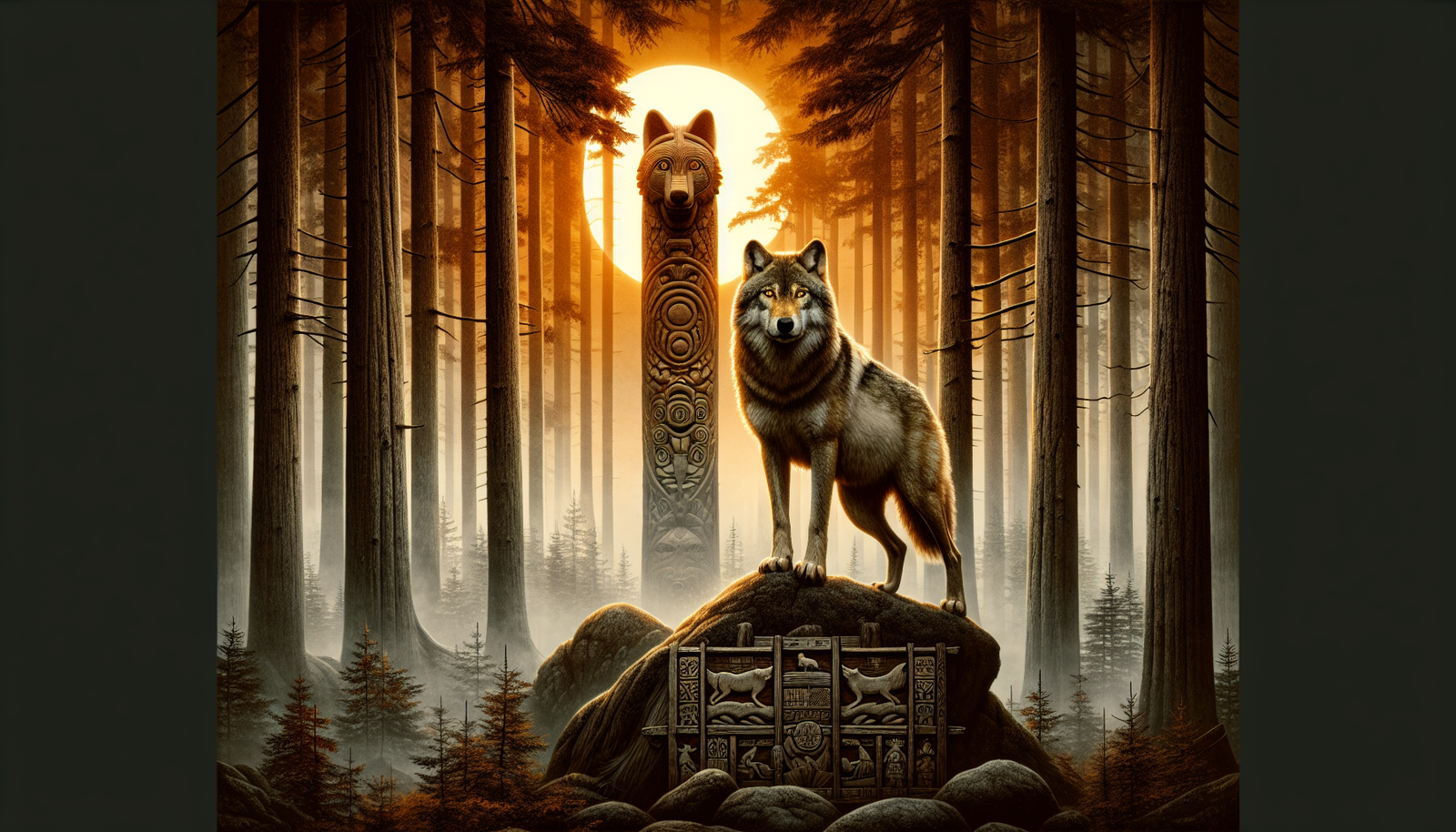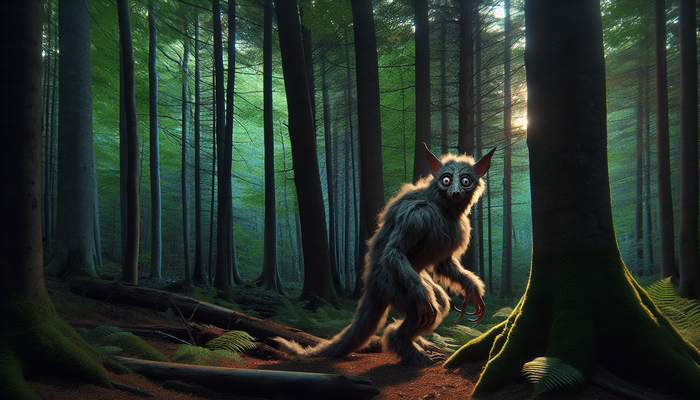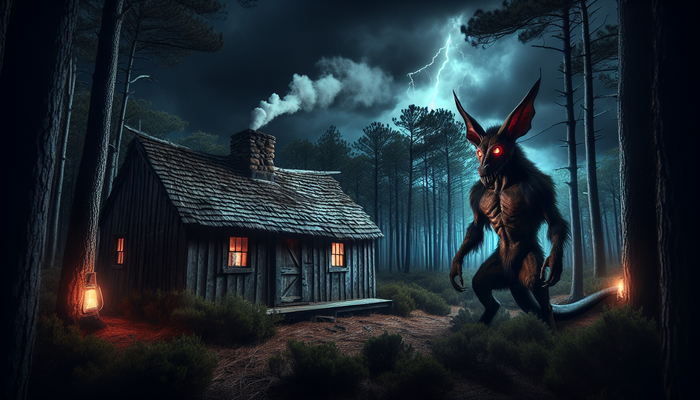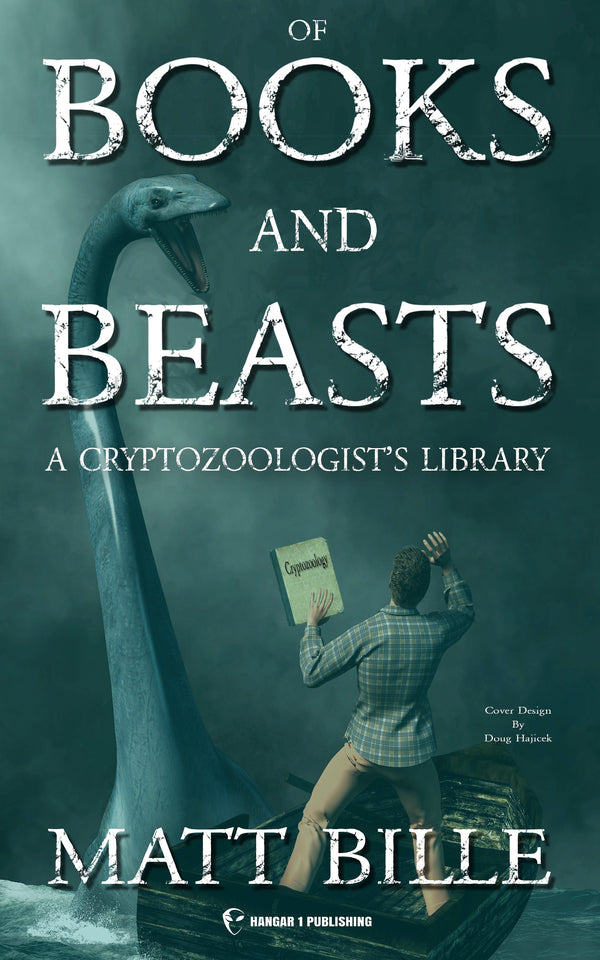Echoes of the Ezo: The Tale of Hokkaido's Phantom Wolf

Lucas Jennings, Cryptozoologist and Adventurous Naturalist
Introduction
The howl of a wolf pierces the misty twilight as I trek through the ancient forests of Hokkaido, Japan's northernmost island. Somewhere in these rugged mountains, I know the phantom of a majestic creature still roams. The Hokkaido wolf, or Ezo wolf as it is known, has captured the imagination of explorers and researchers like myself for over a century. Officially declared extinct in 1889, tales of its continued existence spark my cryptozoological curiosity. What secrets do these woods still hold?
As an adventurous naturalist, I live to unravel such mysteries. The intersection between myth and reality is my obsession, and the Hokkaido wolf beckons me to the boundaries of known science. Join me as I unveil the enigmatic tale of this cryptid canine and delve into the evidence that suggests it still haunts the landscapes of its ancestral domain.
The Hokkaido Wolf: A Historical Perspective
The Hokkaido wolf's scientific name, Canis lupus hattai, was bestowed upon it in 1931 by Japanese zoologist Kyukichi Kishida, classifying it as a subspecies of the gray wolf. Comparable in size to the wolves of Asia and North America, it was noted for its muscular yet lean build, formidable skull and long curved canines. Its coat ranged from light to tannish gray, with darker guard hairs along its back.
This formidable predator once roamed the expanse of Hokkaido, as well as the Russian islands of Sakhalin and Kunashir and the Kamchatka Peninsula. It inhabited the rugged forests and mountain valleys, preying on deer, rabbits, birds and other mammals. Tragically, the late 19th century brought profound changes that ultimately led to the Hokkaido wolf's demise.
During the Meiji Restoration, the Japanese government promoted American-style ranching and livestock production. As wolves began attacking domestic animals, they were seen as pests that threatened the burgeoning industry. Strychnine-laced baits were widely used to eliminate the predators, and bounties further incentivized their slaughter. By 1889, the majestic Hokkaido wolf was declared extinct, the last of its kind ruthlessly poisoned and trapped out of existence.
Cultural Significance of the Ezo Wolf
Despite this systematic destruction, the Hokkaido wolf held a position of reverence in the indigenous Ainu culture of northern Japan. They viewed the wolf as a deity named Horkew Kamuy, meaning "howling god," recognizing its prowess as a fellow hunter. Wolves featured prominently in Ainu origin stories, rituals and folklore as protective figures who guided lost travelers and guarded settlements.
The Ainu incorporated the wolf into spiritual ceremonies called Iomante, where they would sacrifice wolves as a symbolic act of releasing their souls. They believed proper treatment of the wolf would earn them successful hunts, and strictly prohibited killing wolves with firearms or wasting their meat. The Ainu also bred their dogs with Hokkaido wolves to pass on their superior hunting abilities. Clearly, this was no ordinary beast in the eyes of Japan's indigenous people.
The Mystery Continues: Contemporary Sightings and Cryptozoology
Despite its official extinction over a century ago, sporadic reports of Hokkaido wolf sightings persist even today. These unverified encounters range from distant howls to startling face-to-face meetings, often occurring deep in the mountains far from human habitation. Could the phantom of this cryptid canine still haunt the forests of Hokkaido?
Some scientists propose more mundane explanations, speculating that people may be mistaking Siberian huskies or other wolf-dog hybrids for genuine Hokkaido wolves. As a cryptozoologist, I keep an open yet critical mind when assessing such accounts. Witness testimony can provide clues, but photographic evidence or DNA sampling would be needed to substantiate the creature's continued existence. The search continues, fueled by my endless fascination with nature's secrets.
Conservation and Ethical Considerations
The Hokkaido wolf's extinction highlights important lessons about humanity's impact on wildlife and ecosystems. With the wolf gone, deer populations on Hokkaido surged, damaging forests and crops. This demonstrates the vital role predators play in maintaining balance. As we consider potentially reintroducing the Hokkaido wolf, ethical questions arise involving impacts on local communities, livestock and even the wolf's complex relationship with Ainu culture.
How can we protect the interests of farmers and indigenous groups while restoring ecological health? It will require compromise, coexistence practices, and a shared reverence for the natural world. For me, the Hokkaido wolf represents this delicate intersection between progress and tradition, economic needs and conservation. If we listen closely, its howl can guide us to greater wisdom.
The Challenges of Cryptozoology
The history of the Hokkaido wolf illuminates some of the challenges cryptozoologists face in our quest to document legendary creatures. Wolves were seen as threats to ranching interests, leading to aggressive eradication policies. Overcoming such persecution to gain mainstream acceptance is an uphill battle. We must contend with scientific skepticism, lack of formal evidence, and the remoteness of cryptid habitats.
Advancements in technology such as camera traps and DNA analysis offer new hope, but comprehensive interdisciplinary research will be key. As an adventurous naturalist, I embrace these challenges. Solving nature's complex riddles requires bold curiosity, clever problem-solving and unrelenting diligence. The thrill of discovery drives me ever onward.
Community Engagement and the Spirit of Discovery
One of the most rewarding aspects of cryptozoology is the community. Fellow researchers, enthusiasts, witnesses and conservationists - we form a tribe bonded by fascination with the unexplained mysteries of the natural world. Organizations, online forums and conferences allow us to share experiences, debate theories, and collaborate in the search for elusive creatures.
Despite our diverse backgrounds, cryptozoology unites us in a global, inclusive quest to push the boundaries of current knowledge. We realize that nature's secrets cannot be uncovered by any one individual, but through the combined creativity and determination of an open-minded community. Our passion fuels innovation, our camaraderie sustains us through setbacks, and our collective insight drives breakthroughs once deemed impossible. We all play a part in revealing the unknown.
Conclusion
As I pause my trek through Hokkaido's misty forests, the cry of a distant wolf echoes once more. Perhaps it is merely the wind playing tricks, or perhaps the Ezo wolf's legacy endures. Its significance to Japanese culture and its role in our understanding of ecological balance cannot be understated. To indigenous communities, it is a sacred guardian. To scientists, a cautionary tale. And to cryptozoologists like myself, a tantalizing enigma that compels us to dig deeper.
The Hokkaido wolf inhabits the liminal space between reality and legend. Its howl beckons us to the horizon where myth and science meet. As we embrace the unknown with wisdom, ethics and compassion, untold wonders await discovery. Let the wolf's cry awaken our collective spirit of exploration. The search has just begun.
Call to Readers
Have you encountered evidence of the Hokkaido wolf's continued existence? Share your stories and photos to aid ongoing research. Help preserve the legacy of this cryptid through folklore and citizen science. Let's rekindle our ancestral bond with the natural world and unravel its astonishing secrets together. The call of the wild still rings - we need only listen.
From Bigfoot to UFOs: Hangar 1 Publishing Has You Covered!
Explore Untold Stories: Venture into the world of UFOs, cryptids, Bigfoot, and beyond. Every story is a journey into the extraordinary.
Immersive Book Technology: Experience real videos, sights, and sounds within our books. Its not just reading; its an adventure.



























